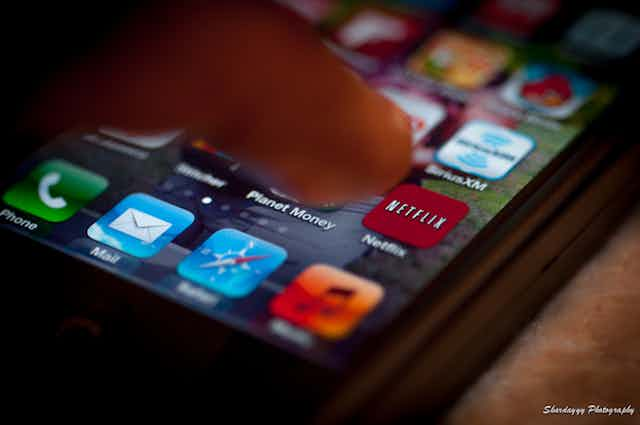Analyst firm UBS this week placed a halt on any growth by the Australian television networks in 2016.
Instead of the previous forecast 2% growth, UBS is now predicting zero growth in the TV market. The long-term projection was also adjusted to 0.5%, down from a previous analyses which projected 2% growth.
As predicted, the arrival of Netflix has been a tipping point for Australian television. When launched in Australia in March, Netflix joined Stan and Presto, and more established players Foxtel and Quickflix, which also provide video on demand services.
It was not clear at the time what impact Netflix would have. Nor was it clear whether Australia had the capacity to have five video on demand services, in addition to the five free-to-air television broadcasters. The Seven Network is a joint partner with Foxtel in Presto and the Nine Network and Fairfax are partners in Stan.
Early indications are there’s been a much faster uptake of the services than some may have planned for. And Netflix looks like the main winner.
Video on demand surpasses expectations
Just months after its launch Netflix was reported to have one million Australian subscribers in 408,000 homes during May. Roy Morgan’s June figures estimated this had increased to 1.42 million Australian subscribers in 559,000 homes.
This equates to an uptake of Netflix by more than 6% of Australian homes, increasing to 8.4% for homes with fixed broadband.
Only 5.2% of Telstra customers have a Netflix subscription, although this equates to 142,000 subscribers, more than the other ISPs. Telstra owns 50% of Foxtel, and also offers its own video on demand service.
It’s also worth noting that 9.6% of Australian homes with a NBN service have subscribed to Netflix (37,000 suscribers).
Pay or pirate?
Surveys of Australians in the past have found most people who illegally download content would be willing to pay for the content if it was offered to them at a reasonable price.
A more recent survey on piracy conducted by the Australian and UK governments found Australians continued to consume content illegally in the months immediately before the launch of Netflix. They continue to say they would stop infringing if legal content was: cheaper (39%), more available (38%), and had the same release date as other countries (36%). Netflix costs A$8.99 a month for a single device.
The Australian government has used this information to make the case for its Copyright Amendment (Online Infringement) Bill. There has also been the legal case between iiNet and Dallas Buyers Club, resulting in copyright infringers being sent letters demanding they pay up.
But are these tactical moves to combat piracy too little too late?
The audience metrics to establish a clear comparison of video on demand services, and other online services such as catch-up TV and broadcast TV are yet to be refined. The TV networks are likely to resist enabling this kind of measurement as they continue to rely heavily on audience ratings for advertising revenue. But has the audience started to make the change anyway?
TV viewing habits continue to shift
The latest quarterly Multi-Screen report suggests the biggest shift has been to portable devices. Smartphone uptake grew to 77%, compared with 48% in the same quarter of 2012. The uptake of tablets also continues to grow, 47% in Q1 2015, which is more than three times the figure in Q1 2012 (15%).
The report notes that “11.6% of all video viewing – both broadcast and non- broadcast content – happens on screens other than the TV”, with television still equating for 88.4%.
While this may assist in establishing an argument that TV is not dead, the report also indicates a clear change in viewing habits, particular by younger generations.
Kids video viewing time online had the biggest increase, now at just over 8 hours per month in comparison to 4:49 hours in Q1 2013. Live TV viewing dropped almost 3 hours to 58:20 hours per month in comparison to Q1 2014; although still 40 minutes above the Q1 2013 figure.
Teens viewing time of television continues to decline, from 73:55 hours in Q1 2013, now to just under 66 hours. The biggest growth in this demographic is video viewing on smartphones, now more than 14 hours; an increase of almost 10 hours from 2013 figures.
Free-to-air audiences are also reportedly down by around 7% year on year in 2015, 13% for those aged between 18 and 49.
Get ready for more mergers?
While it is not yet panic time for Australian TV networks, there is evidence a change in approach and business model will soon be required.
Recent moves by Foxtel (half owned by News Corp) indicate the likely path some media organisations will take. Foxtel recently bought a 15% stake of Ten Network and is joint partner of video on demand service Presto, with the Seven Network. This places it across online, traditional television, pay television and ISP services, to name just a few.
The lack of urgency so far seen by the Australian TV networks does not align with that of analysts, who clearly remain sceptical on the future of growth for the sector.

